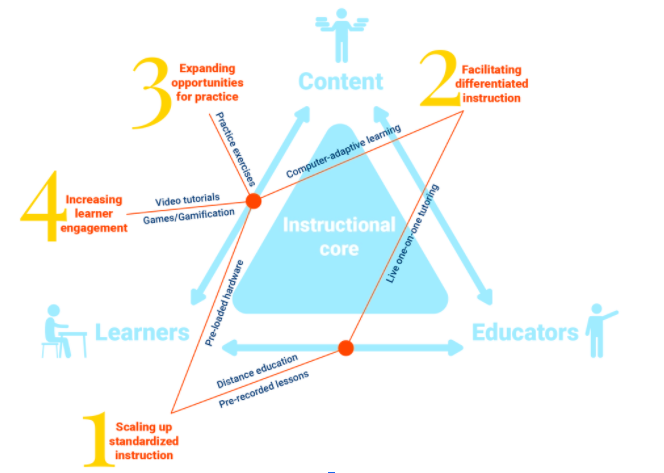September is typically a back-to-school month here in the U.S., but this year school looks a lot different. With many children going back to school online, it’s not surprising that this month we’ve seen a lot written about education technology.
First, a new study from Brookings on “Realizing the Promise” of education technology to improve learning for all. They argue that using technology effectively requires three steps: (1) diagnosing what a school system needs and can implement; (2) looking for evidence on interventions well-suited to these conditions; and (3) piloting and tracking how innovations are working before adopting them at scale. Education technology is one part of a broader set of recommendations from Brookings for how education can emerge stronger than before COVID-19.

Second, a systematic review from Daniel Rodriguez-Segura of “all existing studies with credible causal identification frameworks of EdTech interventions in developing countries.” This blog summarizes the household-based ed tech interventions that could be applicable during school shutdowns. It describes how self-led learning software is promising and, in the right circumstances, remote instruction (e.g. by radio and TV) can also be effective.
Third, a panel organized by the EdTech Hub on how to re-imagine learning in the wake of Covid-19. Some of the key takeaways from the session include the importance of community engagement, using multiple modes for engaging learners, and relentlessly focusing on the most marginalized.
This last point is especially pertinent in light of inequitable access to technology. For example, a UNICEF report found that only 24% of Indian households have an internet connection, with large gaps between urban and rural areas and across boys and girls. There are similar gender divides among adolescents in sub-Saharan Africa. By one estimate, a third of the world’s children lack remote learning. The NYTimes catalogues how, instead of learning, children are now working.
Unfortunately, a relentless focus on the most marginalized does not appear to be the focus of education system efforts during school closures. Young Lives conducted surveys with head teachers in Ethiopia and the states of Andra Pradesh and Telangana in India. They found that most schools in both countries are providing some sort of support during school closures. However, head teachers were wary about how effective these supports would be, especially given lack of technology and internet access. They also worried about the lasting effects on disadvantaged learners, and thought there would be a long term impact of dropout on learning. Despite these concerns, schools’ remote learning support efforts were not targeted towards marginalized groups.
In non ed tech news this month, check out a thought provoking blog post from Alice Evans on The Educational Gender Kuznets Curve. Dev Patel and Justin Sandefur also published a working paper (and blog) linking learning scores across different tests to examine international differences in human capital. Feeling inspired to make the case for further investment in education? Check out “The Key,” a set of resources compiled by Theirworld and the Global Business Coalition for Education that compiles key data and talking points to make the case for everything from girls’ education to early childhood development, education and the digital divide, and so much more.
